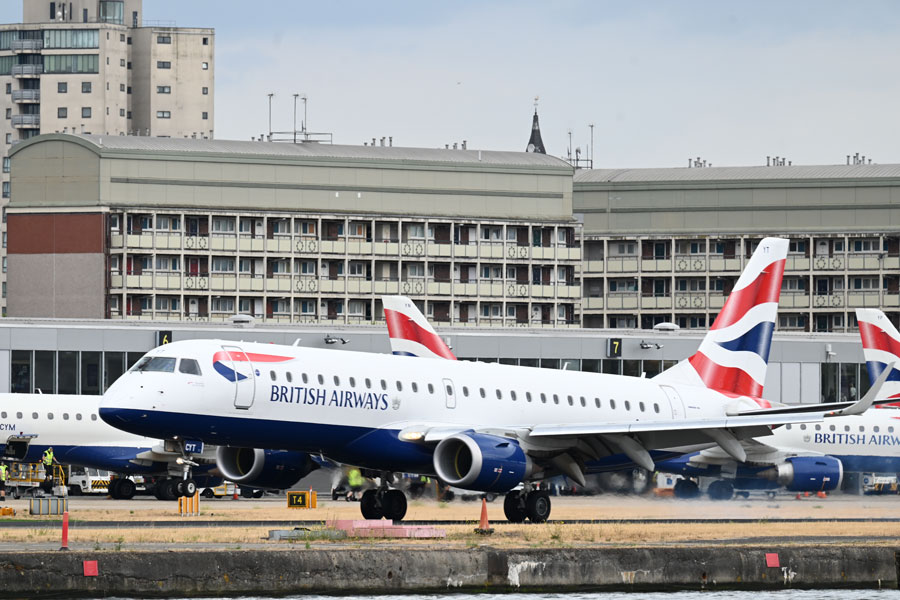
British Airways to Launch Three New Summer Routes in 2026
After the closing of the Paris Olympics and the return to daily life, Japan, a country prone to earthquakes, continues to face the risk of the Nankai Trough earthquake, along with concerns of depreciation of the yen, stock prices fluctuation, and rising prices without a corresponding increase in wages. Despite these varied concerns, daily life goes on quietly. The number of inbound foreign tourists is on the rise, and not only in Tokyo and Osaka but also in famous tourist sites, one can encounter people from a multitude of nationalities, reminiscent of Bangkok decades ago.
This is also true in Nishinari, Osaka, where there seems to be a return to the pre-pandemic atmosphere, or rather, an even more international and multicultural ambiance.
Once again, I headed to Nishinari. My trips to Osaka are not for leisure but for work, as I conduct interviews at eateries for a series I write for a weekly magazine. Until last year, my trips were mostly overnight due to business in Tokyo, but this year, it’s become possible to stay for two nights and three days. Previously I could visit four locations in one trip, but now I can visit six, reducing the frequency of my trips from every four weeks to every six weeks and cutting my transportation expenses by a third.
Some friends ask why I don’t stay in a typical hotel in Osaka city now that my expenses have decreased, given that I don’t need to stay in the super-cheap Nishinari area. But, it’s what I like.
When asked why I choose to stay in Nishinari, my public response is, “Because Nishinari is there.”
This time, I stayed at “Hotel Hatsune.” Although not mentioned in my series, I’ve stayed here twice before and am familiar with the place. That was before the pandemic, so I was curious to see how it might have changed since.
Check-in is from noon to 9 PM. Located in the heart of Nishinari, the safest route might be to head south along the road that runs parallel to the west side of the Hankai Tramway Hankai Line. I arrived during daylight hours this time, so I didn’t feel any danger. Generally, this area might have elderly people who shout or sit by the roadside staring at a single spot while drinking canned highballs, but personally, I’ve never been harmed.
At the entrance, there was a standee that read “Shared Housing, Welfare Recipients Welcome.”
With about 60 rooms, it’s a place that accepts individuals experiencing financial hardship. Shoes are strictly forbidden inside, and guests switch to slippers at the entrance. While it retains a Showa-era atmosphere and cannot deny its age, the cleanliness leaves a good impression.
The first floor has vending machines for soft drinks and, tucked beside the staircase, alcohol vending machines as well.
The pink phone brings a sense of nostalgia, though the Gen Z might find it “emotional” in the opposite sense.
What surprised me was the addition of pots and microwaves, which were not there before. It showed a commitment to evolution without remaining stuck in the past. All this for a tax-inclusive price of 2,000 yen for one night without meals.
The man at the front desk seemed kind and helpful. I received the key and headed to my assigned room on the third floor.
Three tatami mats in size, the Japanese-style room.
There was a small table, a trash bin, and a tissue box.
Also, a TV and a refrigerator. Being a Japanese-style room, I was momentarily concerned about bugs, but it turned out to be fine.
I was a bit surprised by the quantity of hangers. Usually, there are two, but there were five. I smiled a little since I didn’t need that many, but more is better than fewer. Heating and cooling are not via individual air conditioners but are centrally managed for the entire building.
Additionally, a piece of paper that read “cleaning good” hung on the inside doorknob. Perhaps after cleaning is done post-check-out, it’s hung on the outside knob.
Free Wi-Fi was available with no issues regarding speed. According to the internet, not all rooms have it yet, but they are making an effort to include all rooms, so guests who make online reservations should be fine.
Notably, amenities like toothbrushes, razors, or even towels are not provided for free. This is something seen in hotels around Nishinari. Once, I forgot to bring a towel and ended up putting on my clothes right after showering. It was a non-cold period, so surprisingly, it wasn’t an issue, but it’s better to be prepared in advance (amenities can be purchased at the front desk).